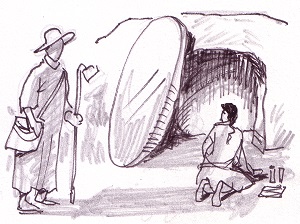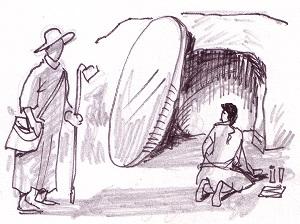

“I have seen the Lord” (John 20:18).
2 Cor 5:14-17; John 20:1-2, 11-18
St. Mary Magdalene's importance in the New Testament is so compelling, no amount of historical effort to diminish or tarnish her role has succeeded in pushing her into the background. In the synoptics, she is central to the group of women who were present at Jesus’ crucifixion and who were the first witnesses to the resurrection. In the fourth Gospel, she personally encountered the risen Christ before any of the men disciples and was sent to announce the resurrection to them. Pope Benedict XVI added his own approbation to the tradition by calling her the “Apostle to the Apostles.”
Yet, for many years and in some dioceses, the celebration of her annual feast has been regarded as an outlier affront to the church’s all-male hierarchy and clergy. The words of Mary in today’s Gospel: “They have taken away my Lord, and I don’t know where they put him” has aptly described official church’s resistance to women as preachers or as qualified to share fully in the governance and liturgical life of the Catholic community.
Yet, this formal intransigence only highlights the Gospel witness. Mary is faithful to her teacher in life and in death. Coming to the tomb to anoint the corpse, she loves him without hope of every seeing him alive again. Denied the chance to say goodbye, she dares tell the supposed gardener that she will retrieve the dead body. Her loss is total, and her grief is without hope. As in Genesis, the light comes ex nihilo, from the void at the sound of Jesus’ voice calling her name. Mary is present at the Creation. What she sees is the start of the New Age, the dawn of Grace, the new Human Being.
As first witness to the Good News, Mary takes the Word of God to a group of men who have yet to cross the threshold of faith. They are still living in the former age, the old patriarchal covenant of blood sacrifice and law, the logic of tradition and succession by cast lots. The doors are locked when she arrives. Peter, broken by failure, full of fear, opens the door and lets morning light flood the room and the huddled enclave of men who still refuse to imagine what a woman’s tears attest: “I have seen the Lord.” This is the rock on which the church is built.
Once established, the men will take full charge, and the rest is history. But each time we celebrate the presence of Mary Magdalene in that history, we are confronted with the mystery first entrusted to her by Jesus, the dangerous memory of God’s limitless love poured out on everyone, unencumbered by protocols and hierarchies, tradition and continuity. There is one reality and it is available to anyone who can see it and live out its implications in self-emptying love. No office, no degree, no permission, no ordination required.
Advertisement






